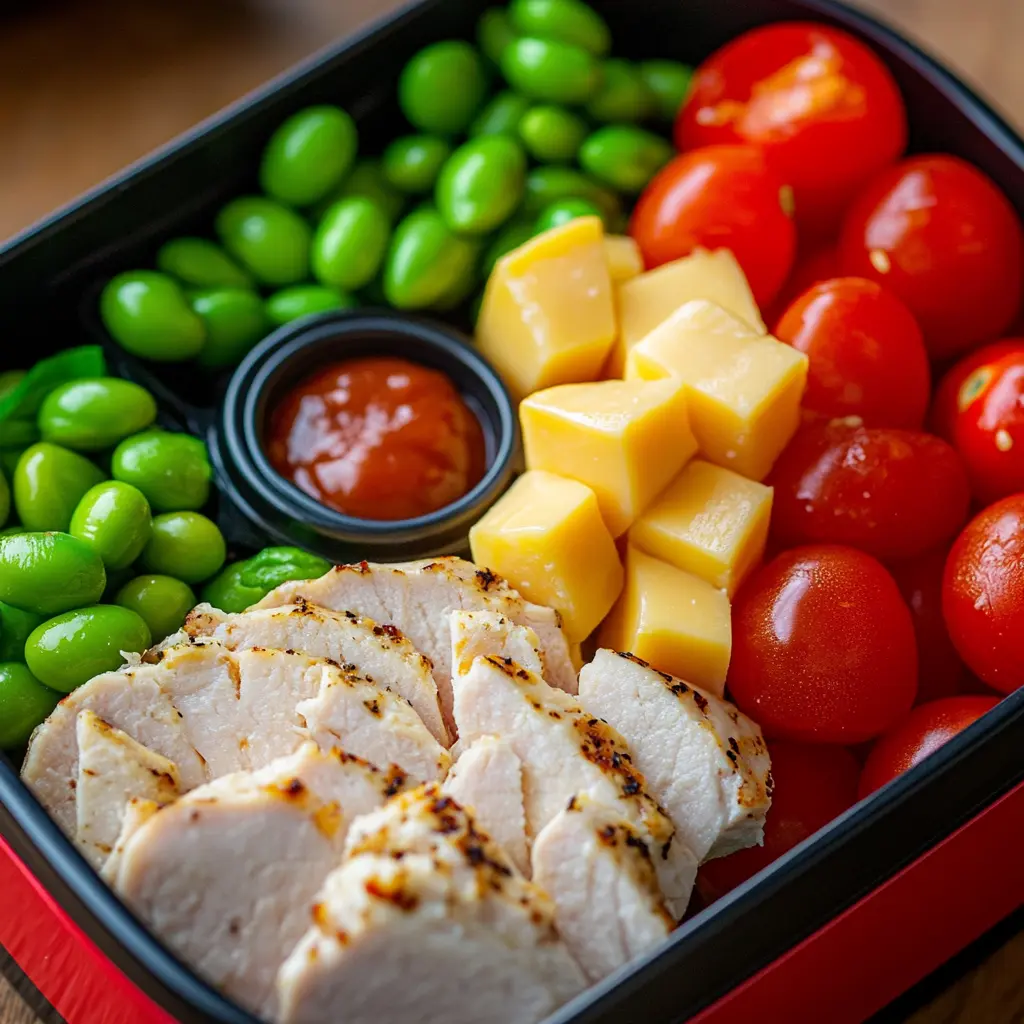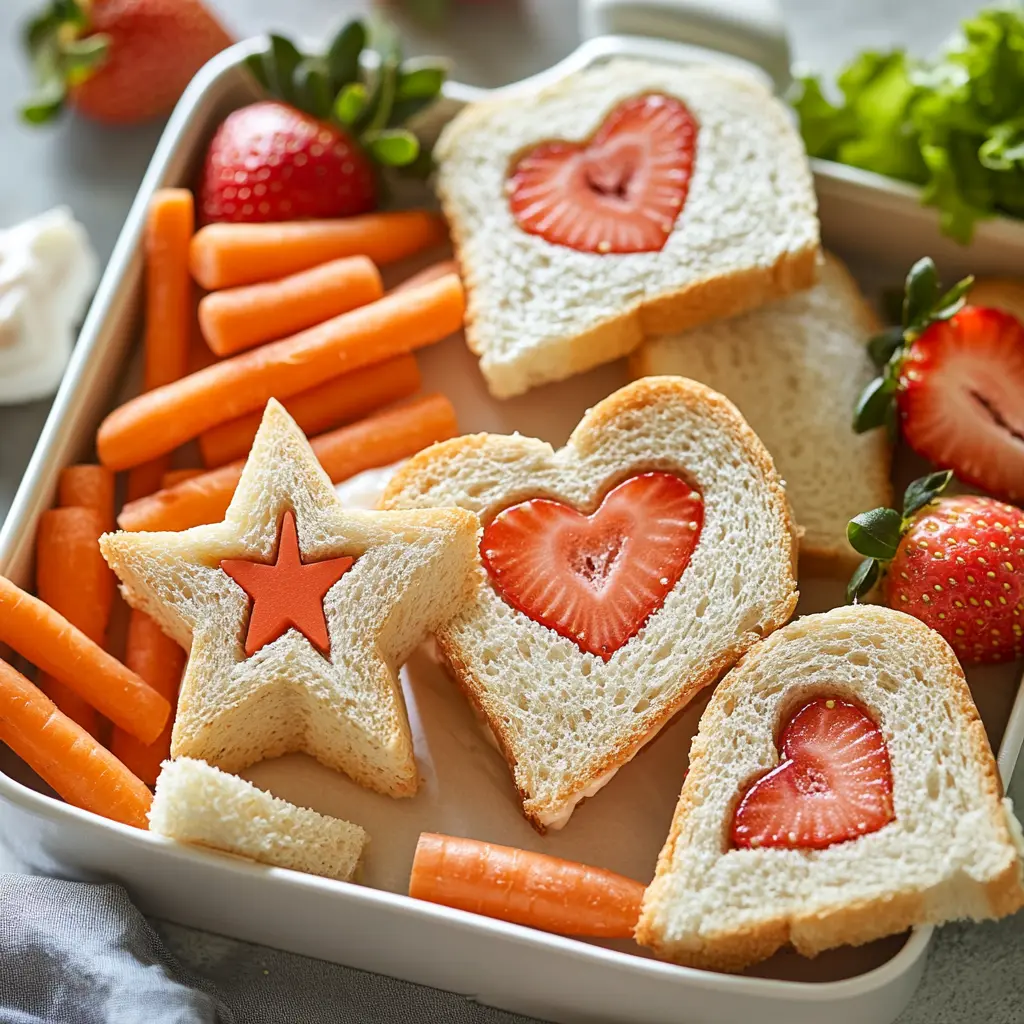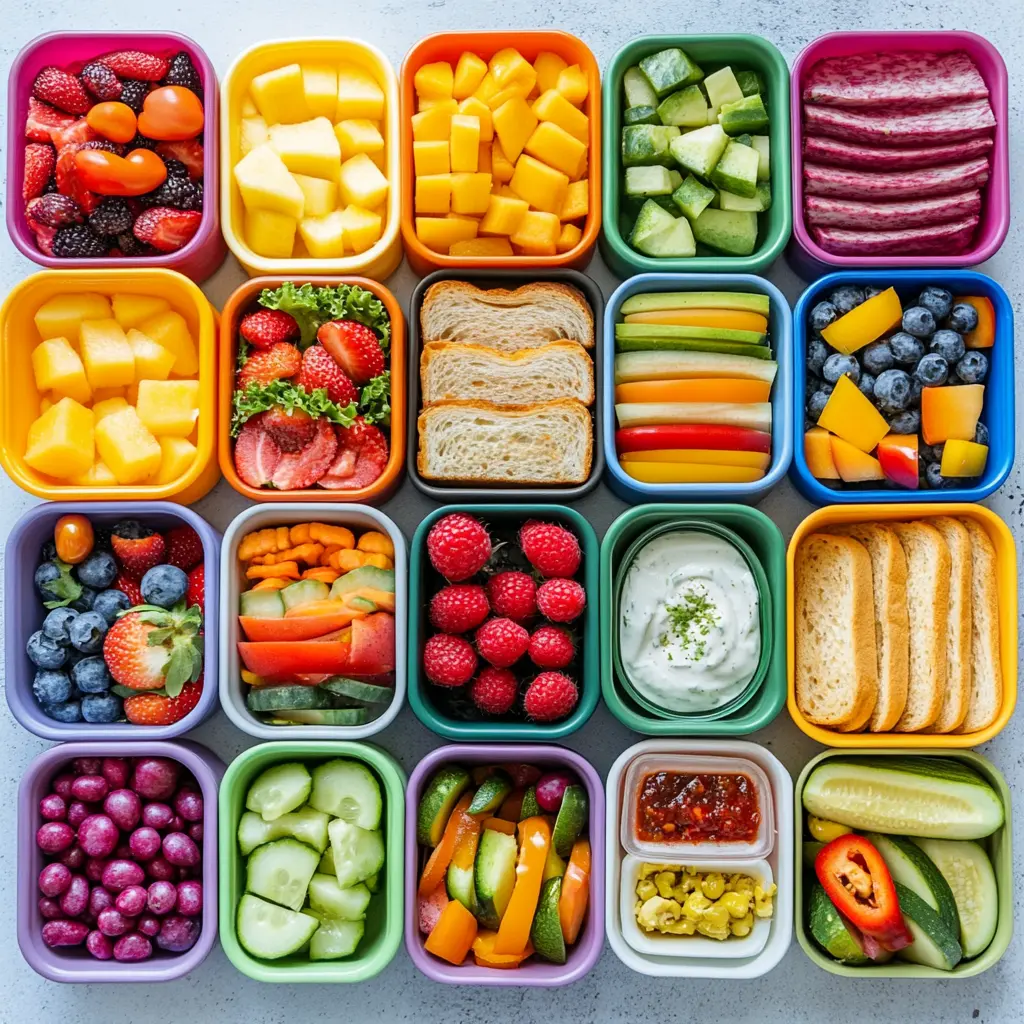Introduction
When it comes to packing good kid lunches, finding the right balance between nutritious, appealing, and convenient options can be tricky. Kids’ taste buds are ever-changing, and what works one day might not work the next. But don’t worry—this guide will walk you through innovative and practical ideas to craft lunches that your kids will enjoy while staying healthy and energized. From quick tips to creative recipes, you’ll find everything you need to keep those lunchboxes exciting and wholesome.
Part 1: Importance of Nutritious Kid Lunches
Children’s lunches are more than just meals—they’re fuel for their bodies and brains. Nutritious lunches provide the energy kids need to stay focused in school, stay active during play, and grow healthily over time. But why is this so important? Let’s break it down.
Supporting Physical Growth and Development
Kids are in a constant state of growth, and the right foods ensure that this process happens smoothly. Meals rich in lean proteins, whole grains, and dairy or alternatives provide the building blocks for strong muscles and bones. Without these essentials, children risk delayed development or fatigue.
Boosting Cognitive Function
Did you know that a good lunch can improve your child’s learning and memory? Foods like whole grains and fruits offer a steady source of energy, avoiding the midday crash caused by sugary or processed options. Incorporating healthy fats like those found in avocado or seeds supports brain health too!
Encouraging Healthy Eating Habits
Providing balanced lunches helps instill lifelong healthy eating habits. When kids regularly see a mix of colorful vegetables, proteins, and whole grains on their plates, they are more likely to make similar choices as adults. This practice can even reduce the risk of chronic diseases later in life.
Maintaining Steady Energy Levels
Kids are often active, whether they’re running around during recess or participating in after-school activities. A nutritious lunch ensures they have the endurance to keep going, whether tackling math problems or scoring goals on the field.
By recognizing the importance of balanced lunches, you’re not just packing food—you’re building a foundation for your child’s long-term health and happiness.
Part 2: Planning Balanced Meals
Packing a balanced lunch isn’t as complicated as it may seem. With a little forethought, you can create meals that check all the nutritional boxes while keeping things fun and delicious. Here’s how to plan a lunch that hits the mark every time.
The Core Components of a Balanced Lunch
To keep kids energized throughout the day, aim for a mix of:
- Proteins: Lean meats, beans, eggs, or plant-based proteins. These support muscle growth and repair.
- Carbohydrates: Whole grains like bread, rice, or pasta provide lasting energy.
- Fruits and Vegetables: Vibrant and nutrient-packed options for vitamins and fiber.
- Dairy or Alternatives: Yogurt, cheese, or fortified plant-based options for calcium and vitamin D.
- Healthy Fats: Avocado slices, nuts (if allowed), or seeds for brain development and energy.
Following the Plate Method
The plate method is a simple visual guide:
- Fill half the plate with fruits and vegetables.
- Reserve a quarter for proteins.
- Dedicate the final quarter to carbohydrates or grains.
This method ensures every meal is balanced without overthinking portions.
Considering Portion Sizes
Kids have smaller appetites than adults, so adjust portions accordingly. A small handful of whole-grain crackers, a few slices of turkey, and a cup of fresh fruit might be plenty for a younger child. For older kids, add an extra serving of veggies or a small dessert like a homemade granola bar.
Mixing Familiar Favorites with New Foods
Transitioning to new, healthier options can be challenging for kids. One way to make it smoother is by pairing new items with familiar favorites. For example, add a new dip like hummus alongside baby carrots or include quinoa in their favorite pasta dish. This approach builds trust and curiosity over time.
Creating a Weekly Lunch Plan
Avoid the morning scramble by planning ahead. Spend a few minutes on Sunday creating a lunch menu for the week. Rotate themes like “sandwich day,” “wrap day,” or “leftover day” to keep things fresh. Prepping ingredients like chopped veggies or cooked proteins in advance saves valuable time during busy mornings.
By planning meals with these strategies in mind, you’ll ensure your child’s lunches are not only balanced but also varied and appealing.
Part 3: Quick and Easy Lunch Ideas
Coming up with quick and easy kid lunches doesn’t mean sacrificing nutrition or creativity. There’s an endless variety of options to make lunchboxes both wholesome and exciting without spending hours in the kitchen. From classic sandwiches to innovative ideas, here’s how to keep lunch preparation stress-free.
Sandwiches and Wraps
Sandwiches are the cornerstone of many school lunches, but they don’t have to be boring. With some tweaks, they can become a fun and nutritious option.
- Classic PB&J with a Twist: Swap traditional peanut butter for almond or sunflower seed butter and use a whole-grain or sprouted bread. Add fresh fruit like banana slices or strawberries for a boost of natural sweetness.
- Turkey and Veggie Wrap: Roll up turkey slices with shredded carrots, cucumbers, and a touch of ranch dressing in a whole-wheat tortilla. This wrap offers a satisfying crunch and protein-packed filling.
- Caprese Sandwich: Layer fresh mozzarella, tomato slices, and basil leaves between slices of ciabatta bread. Drizzle lightly with olive oil and pack separately to keep it fresh until lunchtime.
Bento Box Inspirations
Bento boxes are perfect for offering variety in small portions, making them ideal for picky eaters.

- Protein Power: Pack hard-boiled eggs, a small handful of edamame, and rolled deli turkey slices.
- Colorful Veggie Box: Include sliced bell peppers, baby carrots, cherry tomatoes, and a small container of hummus for dipping.
- Mini DIY Pizzas: Provide whole-grain crackers, marinara sauce, shredded cheese, and small pepperoni slices. Let kids assemble their own pizzas for a fun and interactive meal.
Leftover Transformations
Leftovers aren’t just for dinner; they can easily turn into delicious lunches the next day.
- Chicken Stir-Fry Wraps: Use leftover chicken stir-fry and wrap it in a tortilla with some fresh spinach or kale.
- Mac and Cheese Muffins: Transform last night’s mac and cheese into muffin-sized portions by baking it with a sprinkle of breadcrumbs. These are easy to grab and eat on the go.
- Pasta Salad: Toss leftover pasta with olive oil, cherry tomatoes, diced cucumbers, and a bit of shredded chicken or cheese for a light yet satisfying meal.
Creative Sandwich Alternatives
Not every kid loves traditional bread-based sandwiches. Luckily, there are plenty of creative alternatives that are just as easy to prepare.
- Lettuce Wraps: Use large lettuce leaves to wrap deli meat, cheese, and a dollop of mustard or mayo for a low-carb option.
- Pita Pockets: Fill whole-grain pita bread with hummus, shredded chicken, and mixed greens for a compact, mess-free lunch.
- Bagel Sandwiches: Use mini whole-grain bagels as a base and fill them with cream cheese and thinly sliced cucumber or smoked salmon.
Incorporating Fruits and Vegetables
Including fruits and veggies in every lunch ensures a burst of nutrients and color.
- Fresh Fruit Cups: Mix a variety of seasonal fruits like blueberries, grapes, and melon balls into a portable container. Add a sprinkle of chia seeds for extra nutrition.
- Veggie Sticks with Dip: Cut carrots, celery, and bell peppers into strips and pair them with hummus, guacamole, or yogurt-based ranch dip.
- Creative Salads: Pack a mason jar salad with layers of lettuce, cherry tomatoes, shredded cheese, and small croutons. Keep the dressing in a separate container to prevent sogginess.
Make-Ahead Options
Sometimes, mornings are simply too hectic. Having a few make-ahead lunches can save the day.
- Freezer-Friendly Quesadillas: Prepare cheese quesadillas in bulk, freeze them individually, and heat them in the morning before packing.
- Muffin Tin Frittatas: Bake mini frittatas filled with eggs, spinach, and cheese in a muffin tin. Store in the fridge and grab one for an easy protein-packed meal.
- Homemade Lunchables: Use a divided container to pack slices of deli meat, cheese cubes, whole-grain crackers, and a few grapes. It’s a fun and healthier twist on store-bought options.
Tips for Simplifying Lunch Prep
- Batch Cooking: Dedicate a few hours over the weekend to prep large quantities of versatile items like grilled chicken, roasted veggies, or cooked grains.
- Use Store-Bought Shortcuts: Pre-cut veggies, rotisserie chicken, or whole-grain bread from the store can drastically cut down on prep time.
- Get the Kids Involved: Encourage kids to help pack their own lunches. It’s a great way to teach responsibility while tailoring meals to their tastes.
Packing quick and easy lunches doesn’t mean skimping on nutrition or fun. With these tips, your child’s lunchbox will become the envy of the cafeteria, all while keeping your mornings smooth and stress-free.
Part 4: Fun and Engaging Lunch Ideas
Packing a lunch that’s both nutritious and enjoyable is no small feat, but turning meals into a fun and interactive experience can make all the difference. These ideas are designed to keep kids excited about their lunches while ensuring they’re eating healthy and balanced meals.
DIY Lunchables
Kids love the hands-on aspect of assembling their own meals, and creating a healthier version of classic Lunchables is easier than you might think.
- Build-Your-Own Sandwich Kit: Include slices of whole-grain bread, turkey, cheese, and small containers of condiments. Add a side of fruit for a sweet finish.
- Taco Bowl Lunchables: Pack small portions of seasoned ground beef or chicken, shredded cheese, salsa, and tortilla chips. Let kids construct their own tacos.
- Mini Pizza Assembly Kit: Provide whole-grain crackers, marinara sauce, shredded mozzarella, and mini pepperoni slices for a DIY pizza-making experience.
Themed Lunches
Themed lunches are a great way to spark excitement and creativity. Incorporate a story or concept into the meal to make lunchtime an adventure.
- Safari Lunch: Use animal-shaped cookie cutters to make sandwiches and include “jungle” veggies like celery and broccoli trees. Add a banana as a “monkey snack.”
- Under the Sea: Create a tuna salad wrap, include goldfish crackers, and pack a side of blueberries for a “bubble” effect.
- Rainbow Lunch: Include fruits and vegetables in every color of the rainbow, such as red peppers, orange carrots, yellow pineapple, green cucumbers, and purple grapes.
Interactive Foods
Interactive foods are an excellent way to engage kids with their meals and encourage them to eat more.
- Veggie and Fruit Kabobs: Use skewers to alternate pieces of fruit or veggies. Pair with a small container of yogurt or hummus for dipping.
- Cracker Stackers: Include whole-grain crackers, cheese slices, and turkey rounds that kids can stack and snack on.
- Roll-Ups: Spread cream cheese on a tortilla, layer with thinly sliced veggies or deli meat, roll tightly, and cut into pinwheels. These bite-sized treats are both fun and easy to eat.
Lunches for Picky Eaters
If your child is a selective eater, presenting food in fun ways can make all the difference.
- Sneaky Veggie Muffins: Bake muffins that include hidden veggies like zucchini or carrots. These are sweet, moist, and perfect for finicky eaters.
- Deconstructed Meals: Instead of a sandwich, pack each component separately—turkey slices, cheese cubes, and whole-grain crackers. Let kids assemble their bites however they like.
- Creative Shapes: Use cookie cutters to turn sandwiches, fruits, or veggies into stars, hearts, or other playful shapes.
Encouraging Kids to Get Involved
When kids have a hand in packing their own lunch, they’re more likely to eat it. Give them age-appropriate tasks to help make the process interactive and educational.
- Ingredient Choices: Let them pick a fruit, vegetable, and protein from a selection you provide.
- Hands-On Prep: Teach older kids to spread peanut butter or slice bananas with a safe knife.
- Decorating Containers: Allow younger kids to decorate lunch containers with stickers or drawings.
Making Lunch Healthy and Fun
The key to success is balancing fun with nutrition. While it’s great to include creative elements, ensure that the meal remains balanced with proteins, whole grains, and plenty of fruits and vegetables. Incorporate dips, spreads, or dressings for added flavor, and don’t shy away from occasional treats to keep things exciting.

With these fun and engaging lunch ideas, you’ll transform lunchtime into an enjoyable experience that kids look forward to every day. From interactive foods to themed meals, the possibilities are endless when you let creativity take the lead.
Part 6: Allergy-Friendly Lunch Options
Creating lunchboxes that cater to allergies while remaining tasty and nutritious can be challenging, but with a little creativity and care, it’s entirely possible. These ideas prioritize safety and inclusivity, ensuring every child can enjoy their meal without worry.
Nut-Free Ideas
Many schools have strict nut-free policies, but there are plenty of alternatives that are just as satisfying.
- Sunflower Seed Butter Sandwiches: Replace peanut butter with sunflower seed butter, paired with jam or sliced bananas.
- Nut-Free Trail Mix: Combine seeds, dried fruits, and whole-grain cereal for a crunchy, nut-free snack.
- Cheese and Cracker Bento: Pack a variety of cheeses, whole-grain crackers, and a small serving of sliced fruit.
Gluten-Free Choices
For kids with gluten intolerance or celiac disease, there are numerous lunch ideas that skip wheat-based ingredients.
- Lettuce Wraps: Use large lettuce leaves as a base for deli meats, shredded carrots, and a dollop of mayo.
- Gluten-Free Pasta Salad: Toss gluten-free pasta with olive oil, cherry tomatoes, cucumbers, and a sprinkle of Parmesan.
- Rice Paper Rolls: Fill rice paper wraps with cooked shrimp, vermicelli noodles, and crunchy veggies.
Dairy-Free Alternatives
Dairy allergies or lactose intolerance shouldn’t limit options for creamy, delicious lunches.
- Vegan Cheese Slices: Pair dairy-free cheese with turkey slices and crackers for a simple, safe option.
- Coconut Yogurt Parfaits: Layer coconut-based yogurt with granola and fresh berries.
- Dairy-Free Quesadillas: Use vegan cheese in a whole-wheat tortilla, paired with salsa on the side.
Frequently Asked Questions (FAQs)
What are some quick and healthy lunch ideas for kids?
Quick and healthy lunches include options like turkey and cheese wraps, veggie sticks with hummus, and bento boxes with a mix of fruits, nuts (if allowed), and lean proteins. Prepping ingredients in advance, like chopped veggies or cooked pasta, can speed up the process.
How can I make lunches appealing for picky eaters?
To make lunches more appealing, use playful shapes, colorful presentations, and interactive foods. Offer deconstructed meals, where kids can assemble their own sandwiches or wraps, and involve them in meal prep to boost their enthusiasm.
What are some allergy-friendly lunch options?
Nut-free ideas include sunflower seed butter sandwiches and seed-based trail mixes. For gluten-free options, try lettuce wraps or rice paper rolls. Dairy-free choices could be coconut yogurt parfaits or quesadillas made with vegan cheese.
How can I ensure my child’s lunch stays fresh until lunchtime?
To keep lunches fresh, use insulated containers for hot foods and cold packs for perishable items. Pack fruits and veggies in airtight containers, and keep dressings or dips separate to prevent sogginess.
What are some eco-friendly ways to pack my child’s lunch?
Eco-friendly lunch packing involves using reusable containers, stainless steel water bottles, and beeswax wraps instead of plastic bags. Opt for compostable or recyclable materials wherever possible.
How can I involve my child in packing their own lunch?
Encourage kids to participate by letting them choose their fruits, veggies, and proteins from a selection you provide. Teach them age-appropriate prep skills, such as spreading peanut butter or slicing bananas with a safe knife. Involvement fosters independence and makes them more excited about their meal.
Conclusion
Crafting good kid lunches is about more than just filling a lunchbox—it’s an opportunity to fuel your child’s day, inspire healthy eating habits, and spark excitement for every meal. Whether you’re balancing nutrition with convenience or addressing specific dietary needs, the key lies in creativity, preparation, and a touch of fun. From planning balanced meals to engaging kids with themed or interactive lunches, the options are virtually endless.
By gradually introducing new foods, accommodating allergies, and ensuring proper storage practices, you’re setting your child up for success both inside and outside the classroom. Moreover, involving kids in the process fosters a sense of ownership and makes mealtime even more enjoyable.
With these tips, recipes, and strategies, you can turn any meal into a delightful experience that your kids will look forward to every day. So, let’s get those lunchboxes packed with love, creativity, and the perfect balance of flavor and nutrition!

